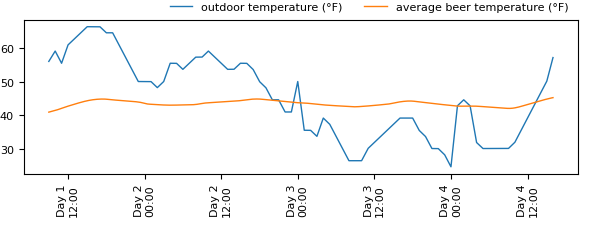Winter weather is returning to the West, with rain in the valleys and snow on the mountain passes. For shippers watching costs, the cold air isn’t automatically a reason to book a reefer.
AccuWeather is forecasting the first major early-season storms for the western U.S., with freezing temperatures and snow affecting key freight corridors into the Pacific Northwest. At first glance, it looks like a lane that needs full refrigeration, but the data tells a different story.
Simulations for a Chicago-to-Seattle beer shipment next week show that thermal mass smooths out the spikes and dips of outside temperature. Even as the truck moves through sub-freezing stretches in Montana and Idaho, the beer stays safely between 40°F and 49°F. Earlier sections of the route, along with daily temperature swings, help maintain stability.
Modeling product temperature along the full route reveals opportunities that aren’t obvious from weather alone.
Routes that look risky at first glance can still run dry when guided by accurate, route-specific thermal modeling. Logistics leaders will use these insights to save money, reduce carbon emissions, and avoid unnecessary stress on reefer capacity.
As more cold weather works its way into our forecasts, CoolShip will keep monitoring which routes actually require refrigeration and which only appear cold. Future Route Notes will highlight these opportunities. And as always, check out our Lab Notes series to find out more about the science behind the tool.
See how your routes hold up under real temperature simulations. Run a lane in CoolShip.

Leave a Reply